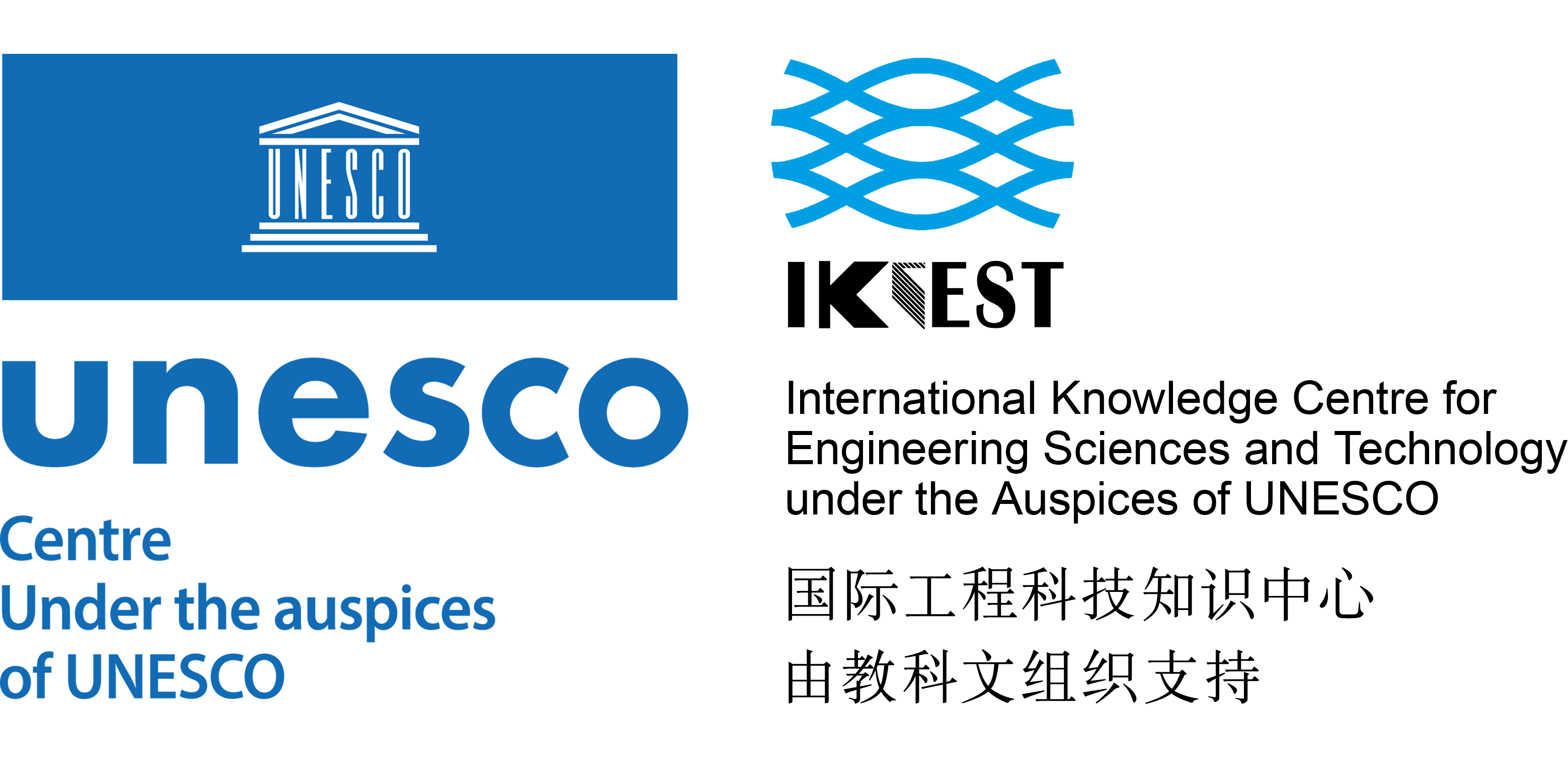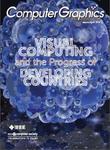Journal
Please choose volume & issue:
-
Situated Visualization in Motion
Keywords:VisualizationAccuracyData visualizationUser experienceMotion analysisSituated VisualizationAthletesScatter PlotUser ExperienceVideo GamesVisual RepresentationResearch AgendaHead MovementsViewing AnglePhysical WorldActivity TrackerMotion FeaturesRelative MovementReading AccuracyInteractive MediaType Of MotionSaccadic Eye MovementsPhysicalismVisual Representation Of DataReal Application ScenariosMean Absolute ErrorChart TypesGameplayPrimary TaskLocal Coordinate SystemAudiencePercentage PointsFast SpeedSpeed ConditionsOnline SurveyAbstracts:We define visualization in motion and make several contributions to how to visualize and design situated visualizations in motion. In situated data visualization, the data are directly visualized near their data referent (i.e., the physical space, object, or person it refers to) (Bressa et al., 2022). Situated visualizations are often useful in contexts where the data referent or the viewer does not remain stationary but is in relative motion. For example, a runner looks at visualizations from their fitness band while running. Reading visualizations in such scenarios might be impacted by motion factors. As such, understanding how to best design visualizations with motion factors is important. We define visualizations in motion as visual data representations used in contexts that exhibit relative motion between a viewer and an entire visualization. We propose a research agenda to understand what research opportunities and challenges are under visualization in motion (Yao et al., 2022). Next, we investigate (a) how motion factors can affect the reading accuracy of visualizations (Yao et al., 2022), (b) how to design and embed visualizations in motion in a real application scenario (Yao et al., 2024), and (c) the user experience and design tradeoffs of visualization in motion through a case study (Yao et al., 2024).
- Call for Articles: IT Professional
-
Visual Analytics Meets Process Mining: Challenges and Opportunities
Keywords:Process miningComputersData analysisVisual analyticsKnowledge discoveryHuman in the loopCognitionMonitoringProcess MiningProcess ModelEvent DataExploratory DataInterfacial InteractionApplicability DomainOpen ChallengesInteractive VisualizationComputational IntelligenceKnowledge ExtractionVisual ExplorationHuman-in-the-loopEvent LogData QualityTime And SpaceIterative ProcessCognitive DomainsSpecific TasksQuantitative EvaluationVisual RepresentationInteraction TechniquesOperational KnowledgeHuman-computer InteractionProcess PerspectiveMulti-perspectiveAbstracts:Visual analytics (VA) integrates the outstanding capabilities of humans in terms of visual information exploration with the enormous processing power of computers to form a powerful knowledge discovery environment. In other words, VA is the science of analytical reasoning facilitated by interactive interfaces, capturing the information discovery process while keeping humans in the loop. Process mining (PM) is a data-driven and process centric approach that aims to extract information and knowledge from event logs to discover, monitor, and improve processes in various application domains. The combination of interactive visual data analysis and exploration with PM algorithms can make complex information structures more comprehensible and facilitate new insights. Yet, this combination remains largely unexplored. In this article, we illustrate the concepts of VA and PM, how their combination can support the extraction of more insights from complex event data, and elaborate on the challenges and opportunities for analyzing process data with VA methods and enhancing VA methods using PM techniques.
-
BRPVis: Visual Analytics for Bus Route Planning Based on Perception of Passenger Travel Demand
Keywords:TrajectoryData miningVisual analyticsPublic transportationGlobal Positioning SystemCollaborationPath planningPublic transportationVisual analyticsThree-dimensional displaysVisual AnalysisRoute PlanningBus RoutesPassenger TravelBus Route PlanningPassenger Travel DemandVisual SystemPublic TransportGlobal Positioning SystemMulti-objective OptimizationPoint Of InterestDomain ExpertsPathfindingTraffic DataMulti-criteria Decision-makingCandidate SolutionsTrajectory DataTravel PatternsGlobal Positioning System DataTravel TimeOrigin-destination PairsMap ViewMultiple RoutesRanking ResultsPareto FrontNon-dominated SortingShorter Travel TimePie ChartRadar ChartAbstracts:Bus route planning is a complex application problem within the transportation domain, aiming to identify the best route among numerous candidate solutions. Despite existing research significantly reducing the exploration space of solutions, planners still face challenges in further exploring optimal route planning solutions. Specifically, the diversity of route attributes increases the complexity of determining their impact, such as the variety and quantity of reachable points of interest. Therefore, we present BRPVis, an interactive visual analytics system designed to assist bus route planners in exploring optimal solutions through multilevel visualization and rich interaction design. Furthermore, we propose a human–machine collaborative multicriteria decision-making method, which quantitatively analyzes the weights of route attributes while incorporating interactive feedback mechanisms to support personalized route exploration. Based on exploration using real-world traffic datasets, three case studies conducted with domain experts demonstrate that BRPVis effectively provides decision support for bus route planning tasks.
- IEEE Transactions on Computers: Call for Papers
-
Automatic and User-Assisted Sphere-Mesh Construction
Keywords:Shape measurementThree-dimensional displaysVideo gamesCostsTestingStandardsUser experienceThree-dimensional displaysMesh generationAutomatic ConstructionInterpolationVideo GamesSphere Of RadiusInteractive ToolDownstream ApplicationsConstruction AlgorithmAutomatic GenerationCollision DetectionPhysical SimulationCenter Of The SphereAbility ValuesManual ToolSpatial QueryTime ConstantPoint CloudBounding BoxVisual ComparisonError FunctionBeginning Of ProcessMerge OperationQuadricDigital ArtMesh Vertices3D MeshHard ConstraintsDistinct IndicesTwo-phase SystemAbstracts:A sphere-mesh is a class of geometric proxies defined as the volume swept by spheres with linearly interpolated centers and radii, potentially striking a good balance between conciseness of representation, simplicity of spatial queries, and expressive power. We investigate the semiautomatic generation of sphere-meshes from standard triangular meshes. We improve one known automatic construction algorithm, based on iterative local coarsening operation, by introducing a mechanism to prevent operations that would result in spheres exceeding the target shape; then, we propose a 3-D interface designed to permit users to easily and intuitively modify the automatically generated sphere-meshes. The two phases, an improved automatic algorithm and a novel interactive tool, used in cascade, constitute a viable semiautomatic way to produce high-quality sphere-meshes. We test our method on several inputs tri-meshes, assess their quality, and finally exemplify the usability of our results by testing them in a few downstream applications.
-
Procedural Fish Modeling
Keywords:FishThree-dimensional displaysSolid modelingImage reconstructionSplines (mathematics)Computational modelingImage categorizationImage reconstructionRendering (computer graphics)Input ImageSingle ImageTeleostModeling SoftwareManual WorkersHigh-quality Images3D MeshLateral ImagesFish ModelVoter PreferencesAdvantageous AspectsNeural FieldModern SoftwareFish ImagesLearning RateBody PartsDeep Neural NetworkDesign ProcessControl PointsRight-hand Side Of The FigureView SynthesisStructural Similarity Index MeasureStructure From MotionFrontal ViewPelvic FinTarget FishingSide ViewPectoral FinAdditional ImagingAbstracts:It is time- and man-power intensive to craft various fish species for underwater animations and games. Even professionals spend hours to days for one. Therefore, we propose procedural fish generation, which presents an innovative and automatic approach to generate 3-D fish models with one lateral image. The core lies in parameterizing the ray-finned fish with curves and optimizing them with textures to fit the input using differentiable rendering, greatly reducing the manual modeling work. It presents advantages over multi-image reconstruction in requiring a single image, while state-of-the-art methods suffer from such a scenario to achieve informative reconstruction. Also, our method outputs a polygon mesh, widely compatible with modern graphics hardware and software, thus facilitating further editing. Furthermore, we fine tune the prompts for Stable Diffusion while users can type a name to find high-quality lateral images. Extensive ablation studies and comparisons have proved its effectiveness and efficiency for experts and nonexperts.
-
Using Virtual Reality in the Learning of Geomatic Engineering Education
Keywords:Virtual realityInstrumentsGeomagnetismVirtual environmentsGeospatial analysisHeadphonesTrackingSurveysSolid modelingEducational technologyLearning systemsEducational programsVirtuallyEngineering EducationLearning ProcessLack Of KnowledgeMobile DevicesLearning ExperiencesGeographic Information SystemKnowledge AcquisitionSkill AcquisitionCartographicVirtual WorldField Of PracticeInteractive ExperienceQuasi-experimental DesignStudent PerceptionsChemistry LaboratoryPhotogrammetryImmersive ExperienceVirtual SimulationImmersive EnvironmentGroup Of StudentsInformation And Communication TechnologiesKnowledge Of StudentsUnderstanding Of MethodologyExperimental GroupField InstrumentField ExerciseAcademic YearFisheye LensImmersive Virtual RealityAbstracts:Emerging technologies can be effective in enhancing the teaching–learning process. In this article, virtual reality (VR) is used as a tool to support learning and skill acquisition in a subject of geomatics in an engineering degree. The developed tool is an immersive virtual environment that allows access to a first-person observation of the methodology to be followed in the field to carry out the proposed task. In order to validate this tool, a quasi-experiment was performed involving 170 students and several instruments to assess the knowledge acquisition of these students and their perceptions toward the learning experience. The obtained results indicate that the use of VR in the field of geomatics may be a promising means of conveying new knowledge and enhancing learning and competence acquisition in geomatics.
-
Die-Cast: A Tech-Invested Immersive Performance Company for Tech-Enabled Audiences
Keywords:VisualizationRuntimeArtCyberspaceInterviewsVideoconferencesCreativityCompaniesProduct designVisualizationCyberspaceEntertainment industryImmersive PerformancePandemicHealth-related Quality Of LifeFunction Of LifePhysical SpaceWork MotivationAudience MembersMonologueHotel RoomChatbotWide Range Of TechnologiesMetrics Of SuccessUnderstanding Of Complex PhenomenaZoom Video CommunicationsSingle ViewpointWide Variety Of DisciplinesAbstracts:This article presents an interview with two of the creative talents behind Die-Cast, an immersive performance company based in Philadelphia, PA, USA, conducted by the IEEE CG&A Art on Graphics department via a Zoom video conference on 12 August 2024. The interview provides details about Die-Cast's artistic process and how they support a company manifesto of always meeting audiences where they want and need to be met, which includes both providing access in cyberspace as well as live performances in physical spaces. Since their stories are often larger than can be contained by a typical performance runtime, a novel characteristic of their live performance work is that audience members get to choose what to engage in or delegate that decision to provided tech support that then chooses the path to follow. Analogies regarding visualization approaches to complex phenomena exploration are implicit in discussion.
-
Toward Indigenous Presence: A Radical Relationality Approach for Designing Mixed-Reality Indigenous Data Experiences
Keywords:EthicsProtocolsDesign methodologyVirtual realityGlobal communicationCultural differencesCultural aspectsComputers and information processingUser experienceMixed realityAugmented realityVirtual realityIndigenous PresenceCommunity MembersDesign ProcessComputer TechnologyNight ShiftParticipatory DesignComputer GraphicsKinship RelationsCommunity-based Participatory ResearchRedistribution Of WealthDesign ThinkingLand ExpropriationIndigenous Community MembersHead-mounted DisplayWays Of KnowingAcademic TeamCultural RevivalAbstracts:We present Indigenous Presence, a design principle for partnering with Indigenous communities to make computing tools responsive to Indigenous priorities. Indigenous Presence blends participatory design methodologies with radical relationality, a concept from Critical Indigenous Theory, and theories of presence from virtual and mixed-reality (MR) research. Examples come from a six-year partnership with local Micronesian and Dakota communities that aims, in part, to use MR to revitalize and exchange cultural knowledges of canoes, waters, lands, and skies. Five factors for activating Indigenous Presence are identifed: 1) having a community-relevant topic, 2) including Indigenous makers, 3) creating culturally identifiable experiences, 4) centering radical relationality in design, and 5) respecting Indigenous protocols. Potential benefits include higher ethical standards for computing research along with increased trustworthiness and participation in computing.
Hot Journals
- Risk Breakdown Matrix for Risk-Based Inspection of Transportation Infrastructure Projects
- Social Control in Outsourced Architectural and Engineering Design Consulting Projects: Behavioral Consequences and Motivational Mechanism
- 2022 Best Paper Award
- Hold-Ups and Failures in Negotiated Order: Unearthing the Nuances of Rework Causation in Construction
- Prevalence and Risk Factors for Poor Mental Health and Suicidal Ideation in the Nigerian Construction Industry
- CFRP–Cable-Stayed Bridge Hybrid with Partial Suspension and a Span Exceeding 3,000 m: Concept, Optimization, and Construction
- Impact of Wind Load Characteristics on Computed Bridge Stay-Cable Forces Used for Bridge Health Monitoring
- Weak-End and Frequency Detection of Elastically Supported Bridges by Contact Residual Response of Two-Axle Test Vehicle in a Round Trip
- Development of Performance-Based Fragility Curves of Coastal Bridges Subjected to Extreme Wave-Induced Loads
- An Analytical Model to Evaluate Short- and Long-Term Performances of Post-Tensioned Concrete Box-Girder Bridges Rehabilitated by an Ultrahigh-Performance Concrete Overlay
- Three-Dimensional Velocity Distribution in Straight Smooth Channels Modeled by Modified Log-Law
- Experimental Investigation on Flow Past Two and Three Side-by-Side Inclined Cylinders
- An Experimental Investigation of Rotor–Box Aerodynamic Interaction 1
- Modeling Gas–Liquid Flow Between Rotating and Nonrotating Annular Disks
- Entry Length Requirements for Two- and Three-Dimensional Laminar Couette–Poiseuille Flows
Advanced Materials (3,745)
- Structured Perovskite Light Absorbers for Efficient and Stable Photovoltaics
- Strategies for High‐Performance Solid‐State Triplet–Triplet‐Annihilation‐Based Photon Upconversion
- Atomic Engineering Catalyzed MnO2 Electrolysis Kinetics for a Hybrid Aqueous Battery with High Power and Energy Density
- Crystal Adaptronics: Global Performance Indices for Dynamic Crystals as Organic Thermal Actuators (Adv. Mater. 20/2020)
- Enlightening Materials with Photoswitches
Acta Astronautica (1,768)
- Mixed-integer trajectory optimization with no-fly zone constraints for a hypersonic vehicle
- Adaptive control design for active Pogo suppression of large strap-on liquid launch vehicles
- Machine learning based approach for modeling and forecasting of GPS–TEC during diverse solar phase periods
- Effect of two-dimensional micro-cavity surface on hypersonic boundary layer
- Investigation on burning behaviors of aluminum agglomerates in solid rocket motor with detailed combustion model








 User Center
User Center My Training Class
My Training Class Feedback
Feedback





